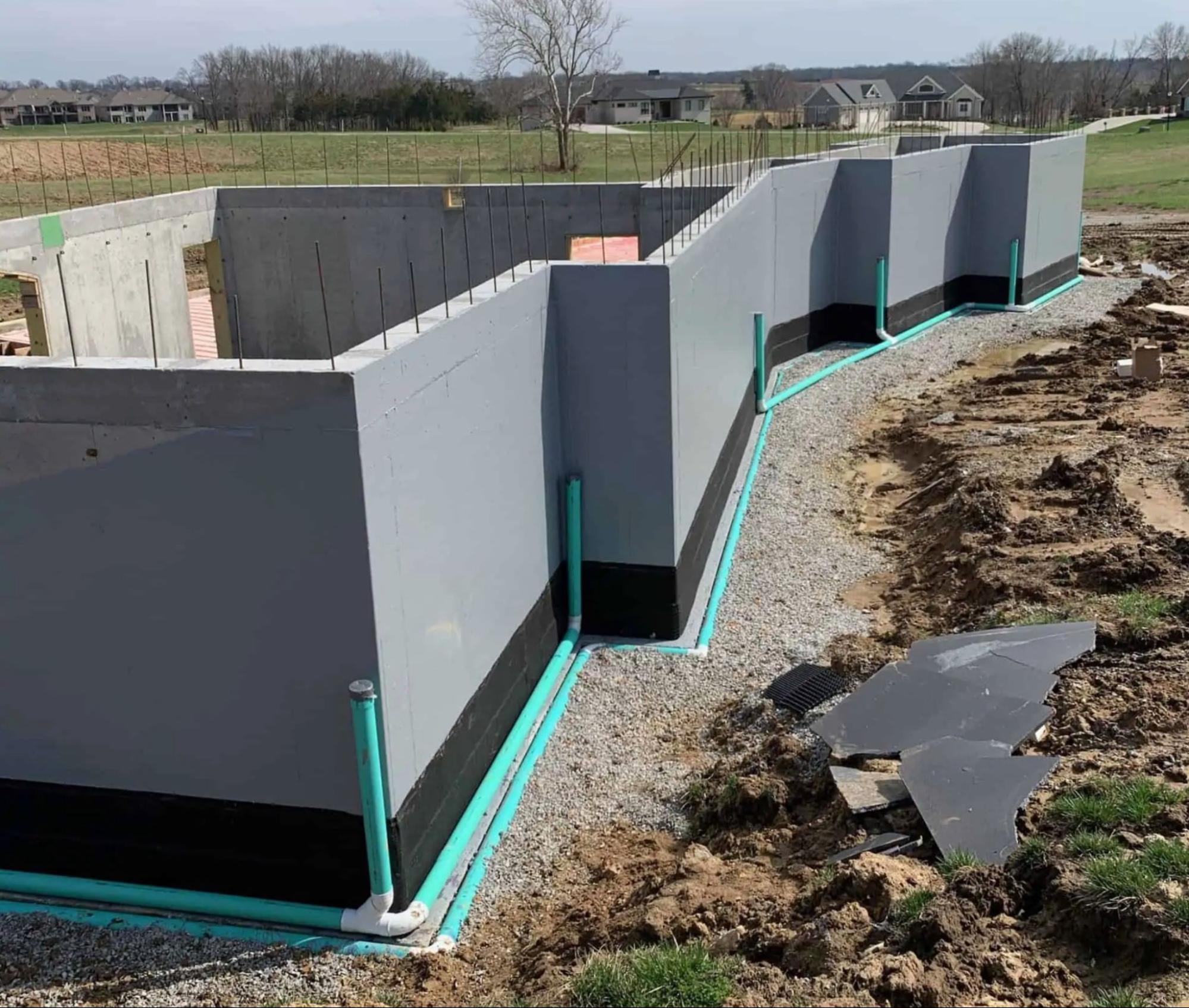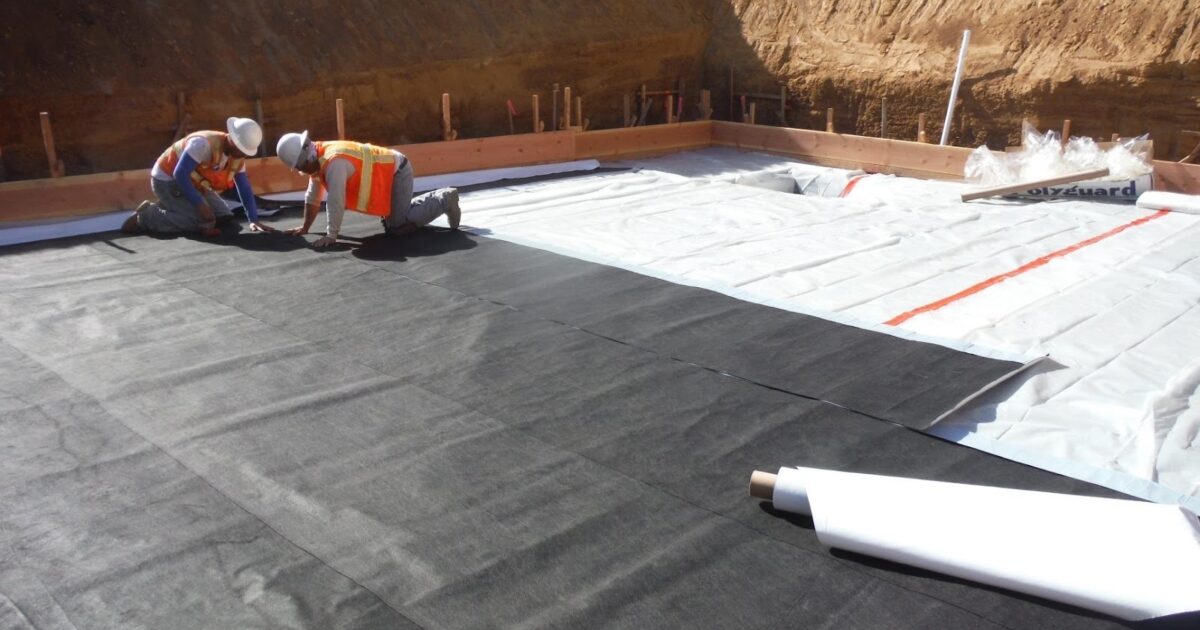Sump pump installation & replacement Omaha: A Homeowner’s Checklist
Wiki Article
Exactly How Waterproofing Works: An In-depth Check Out Methods and Technologies
Waterproofing is essential for safeguarding structures from moisture-related damage. It involves different strategies and technologies that produce barriers versus water intrusion. Typical methods, such as compressed clay, exist together with modern innovations like liquid-applied membranes. Recognizing the nuances of these strategies is essential for effective application. The efficiency of any waterproofing solution hinges not only on the methods utilized however also on recurring maintenance and assessment. What are the essential variables that affect long-lasting performance?Understanding the Essentials of Waterproofing
Waterproofing is an essential procedure that secures structures from water invasion, which can result in considerable damage with time. This approach entails the application of different products and techniques made to create an obstacle against dampness. The main objective is to avoid water from passing through surfaces, which can trigger deterioration, mold and mildew growth, and architectural instability.Various variables affect the choice of waterproofing method, consisting of the sort of framework, its place, and ecological conditions. Recognizing the physics of water motion and the homes of different products is crucial in picking a reliable waterproofing solution.Effective waterproofing not only safeguards structures however likewise enhances their longevity and honesty. Generally, it is incorporated into the layout stage of building to guarantee detailed defense. As understanding of water-related concerns expands, the relevance of understanding waterproofing fundamentals becomes significantly clear to engineers, building contractors, and residential or commercial property proprietors alike.Traditional Waterproofing Approaches
Conventional waterproofing methods have been made use of for centuries, depending on tried and true methods and materials to guard frameworks from water damages. Among the earliest approaches involves making use of clay, which, when compressed, produces a natural barrier versus moisture. In addition, asphalt, a sticky, black product stemmed from oil, has been employed for its water-resistant properties, frequently applied to roofs and foundations.Another method entails the application of lime-based plasters, which provide a breathable layer that allows wetness to escape while preventing water access. Thatch roof covering, a standard technique still seen in some societies, uses outstanding waterproofing as a result of its firmly packed straw layers.Moreover, making use of stone and brick has projected, as these materials are naturally resistant to water when properly set up. On the whole, traditional waterproofing approaches emphasize the relevance of choosing appropriate materials and building and construction methods to boost longevity versus water breach.Modern Waterproofing Technologies
Advancements in contemporary waterproofing technologies have actually changed the means structures are secured from water damages. Innovative techniques such as liquid-applied membrane layers and sophisticated sealants have actually enhanced the efficiency and versatility of waterproofing solutions. These modern technologies enable smooth application, decreasing the risk of leakages and making sure detailed coverage over complicated surfaces.Moreover, the combination of clever innovations, such as moisture sensors and automated surveillance systems, makes it possible for real-time evaluation of waterproofing efficiency. This positive method assists in timely upkeep and lowers lasting fixing costs.Additionally, innovations in spray-applied finishings supply quick application and excellent attachment, adjusting to numerous substratums while giving robust protection. Strategies like polymer-modified systems additionally boost adaptability and toughness, making them suitable for varied atmospheres. Overall, modern-day waterproofing innovations not just minimize water intrusion yet also add to the long life and sustainability of frameworks, marking a substantial change in the market.Materials Utilized in Waterproofing
The efficiency of waterproofing solutions greatly depends on the materials utilized in their application. Various materials are employed to create barriers versus water access, each with distinct residential properties matched for different settings. Typically made use of materials consist of membranes, coatings, and sealants.Liquid-applied membrane layers, typically made from polyurethane or acrylic, develop a seamless barrier that adapts to bca waterproofing complicated surfaces. Sheet membranes, normally created from rubber or polycarbonate, deal sturdiness and are suitable for bigger areas. Additionally, cementitious waterproofing products, made up of cementitious substances, offer superb bond and flexibility.Sealants made from silicone or polyurethane are vital for joints and joints, ensuring complete defense. Sophisticated materials, such as geo-composite membrane layers, integrate multiple functions, enhancing performance. In general, the choice of waterproofing materials is crucial in achieving long-lasting and efficient water resistance, tailored to details task needs and ecological conditions.
Typical Applications of Waterproofing
Waterproofing plays an essential duty in various sectors, ensuring the long life and stability of frameworks. Common applications consist of property services that safeguard homes, industrial framework that safeguards companies, and commercial setups that call for robust defense against moisture. Recognizing these applications highlights the importance of waterproofing in maintaining both safety and functionality throughout different environments.Residential Waterproofing Solutions
Lots of home owners encounter obstacles with moisture invasion, making efficient domestic waterproofing remedies essential. Numerous techniques exist to resolve this concern, consisting of exterior and interior waterproofing systems. Interior options typically include the application of sealers and coverings to cellar walls, which aid stop water seepage. Outside methods normally consist of the setup of drain systems and water-proof membrane layers that divert water away from the foundation.Additionally, home owners may consider sump pumps to get rid of water build-up and dehumidifiers to control moisture degrees. Proper grading and the use of rain gutters additionally play an essential role in taking care of water circulation around the home. By implementing these methods, property owners can greatly decrease the danger of water damages and mold development, making sure a completely dry and secure living atmosphere.
Commercial Facilities Defense
Effective waterproofing solutions play a crucial function in the security of industrial framework. Water Solutions. These techniques are crucial for safeguarding buildings, car parking frameworks, and bridges from water damages, which can endanger architectural stability and bring about pricey repairs. Common applications include the installation of membrane layers, coatings, and sealants that develop obstacles versus moisture seepage. Areas such as cellars, roof coverings, and outside wall surfaces are typically focused on you can try this out to assure durability and longevity. Additionally, waterproofing systems can improve energy effectiveness by stopping water-related problems that might bring about mold growth and deterioration. By implementing durable waterproofing procedures, residential or commercial property owners can secure their financial investments and keep functional effectiveness, inevitably adding to the general sustainability of industrial facilitiesIndustrial Applications Review
While different industries deal with one-of-a-kind obstacles, the requirement for trusted waterproofing options remains a consistent in commercial applications. Industries such as production, building, and energy usually come across environments where moisture exposure can endanger architectural stability and functional effectiveness. In manufacturing centers, waterproofing is crucial for securing equipment and materials from water damage. In building, it safeguards foundations and basements against groundwater seepage. The energy market relies on waterproofing for the security of devices in hydroelectric plants and offshore structures. Furthermore, food handling markets use waterproofing to ensure hygiene and conformity with safety and security standards. In general, effective waterproofing remedies are crucial for boosting resilience, security, and efficiency throughout numerous commercial settings.
Upkeep and Longevity of Waterproofing Solutions
Waterproofing solutions are designed to use long-term defense against wetness invasion, normal maintenance is crucial to assure their performance and longevity. Routine evaluations play a significant function in determining potential issues such as fractures, peeling off, or indicators of water damage. Dealing with these problems immediately can stop more deterioration and expensive repairs.Additionally, cleansing the surface area of waterproof locations assists get rid of dirt and debris that might endanger the honesty of the waterproofing obstacle. It's likewise a good idea to reapply protective layers or sealants as suggested by makers drytech waterproofing to preserve excellent efficiency. Environmental variables, such as UV exposure and severe weather condition problems, can affect the life-span of waterproofing products, making routine assessment crucialOften Asked Concerns
Can Waterproofing Be Applied in Cold Weather Condition?
The concern of applying waterproofing in cool weather increases concerns regarding attachment and healing. Numerous items may not perform at their finest in low temperature levels, requiring careful choice and consideration of particular standards for effective application.How Much Time Does Waterproofing Typically Last?
The period of waterproofing performance varies based upon products and ecological elements. Usually, it can last from five to 10 years, however routine maintenance and evaluations are essential to ensure peak performance and long life.Is Do It Yourself Waterproofing Effective and Safe?
The performance and security of do it yourself waterproofing depend upon numerous elements, including material top quality and application technique. While some people attain adequate outcomes, others might run into problems that endanger lasting security and architectural honesty.What Are the Indicators of Failing Waterproofing?
Indicators of stopping working waterproofing include noticeable water discolorations, peeling off paint, mold growth, musty smells, and wetness in walls or ceilings - Sump pump discharge drainage Omaha. These signs recommend jeopardized barriers, requiring punctual inspection and potential remediation to prevent further damagesExactly how Do I Choose the Right Waterproofing Specialist?

Report this wiki page